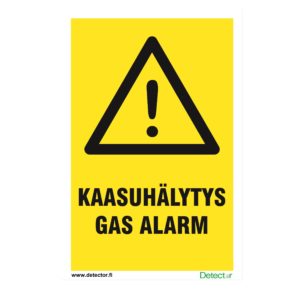When planning gas detection, several factors must be taken into account, such as the environmental conditions (e.g. temperature, humidity, air pressure and air currents) of the space being monitored. Deciding whether the gas detectors should be connected to a gas detection controller or, for example, an automation system, should also be included in the planning process. We talked about these alternatives in a previous blog entry, which can be found here.

When planning, it is also a good idea to check whether there are any vibrations or exposure to chemicals in the space, or the gas detectors are exposed to spray. In spaces where gas detectors may be exposed to impacts, dirt or water spray, we recommend installing an HST Protective case over the detectors. When monitoring flammable gases, spaces may often be classified as ATEX (explosive atmosphere) zones, in which case the gas detectors must have adequate ATEX certification. In addition to the above, it is a good idea to specify the minimum requirements for gas detectors in the BAS plan, including at least the IP rating, T90 gas detector response time, the gas being monitored and the desired detection area.
When an alarm is triggered, some of the more common response controls are automatically shutting off the gas supply with a valve, ventilation control, setting off light and sound alarms, and sending the alarm to the required personnel, such as by text message or email. These should be defined in the plan and the placement of alarm lights and sirens should be carefully thought out. And, do not forget to use signs – these help the end user know what alarm has been triggered.
Plans can be affected by a great many things – don’t hesitate to contact the gas detection experts at Detector Ltd! Detector Ltd. works in cooperation with engineers. Let’s find the best possible solution together!
-

Gas Detector DGTkex
The DGTkex is suitable for use in hazardous areas for the measurement and monitoring of combustible gases and solvent vapours.
-

HST Protective case (large).
The weather cover protects the gas detector from splashing water and dents.
-

Gas alarm sign
A gas alarm sign to be installed next to the alarm strobe or sounder.
-

Alarm sounder and strobe
Combination with alarm sounder and strobe which can be connected to the Gas Detection controller, begins to flash and produces a loud alarm sound when an alarm limit is exceeded.

